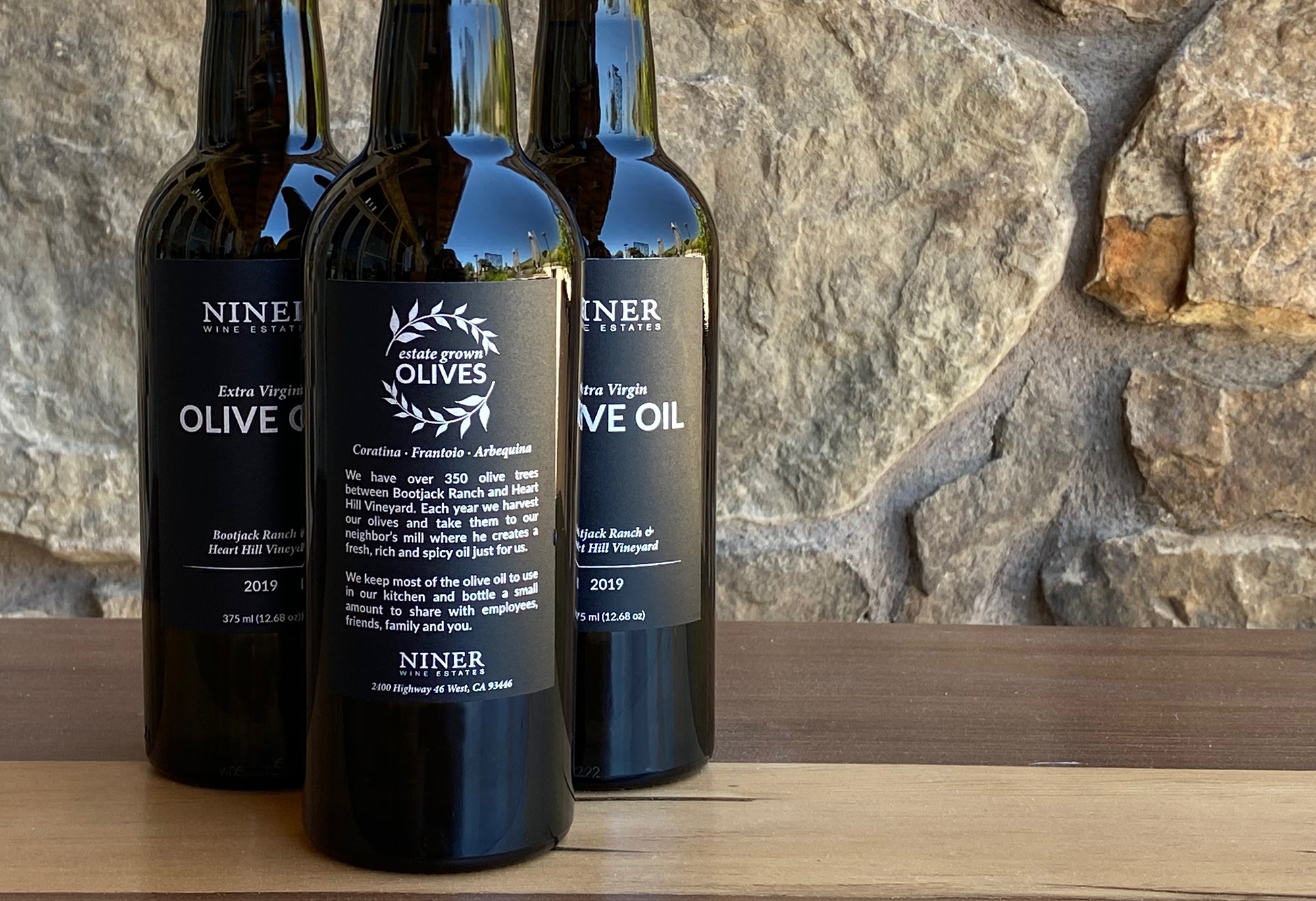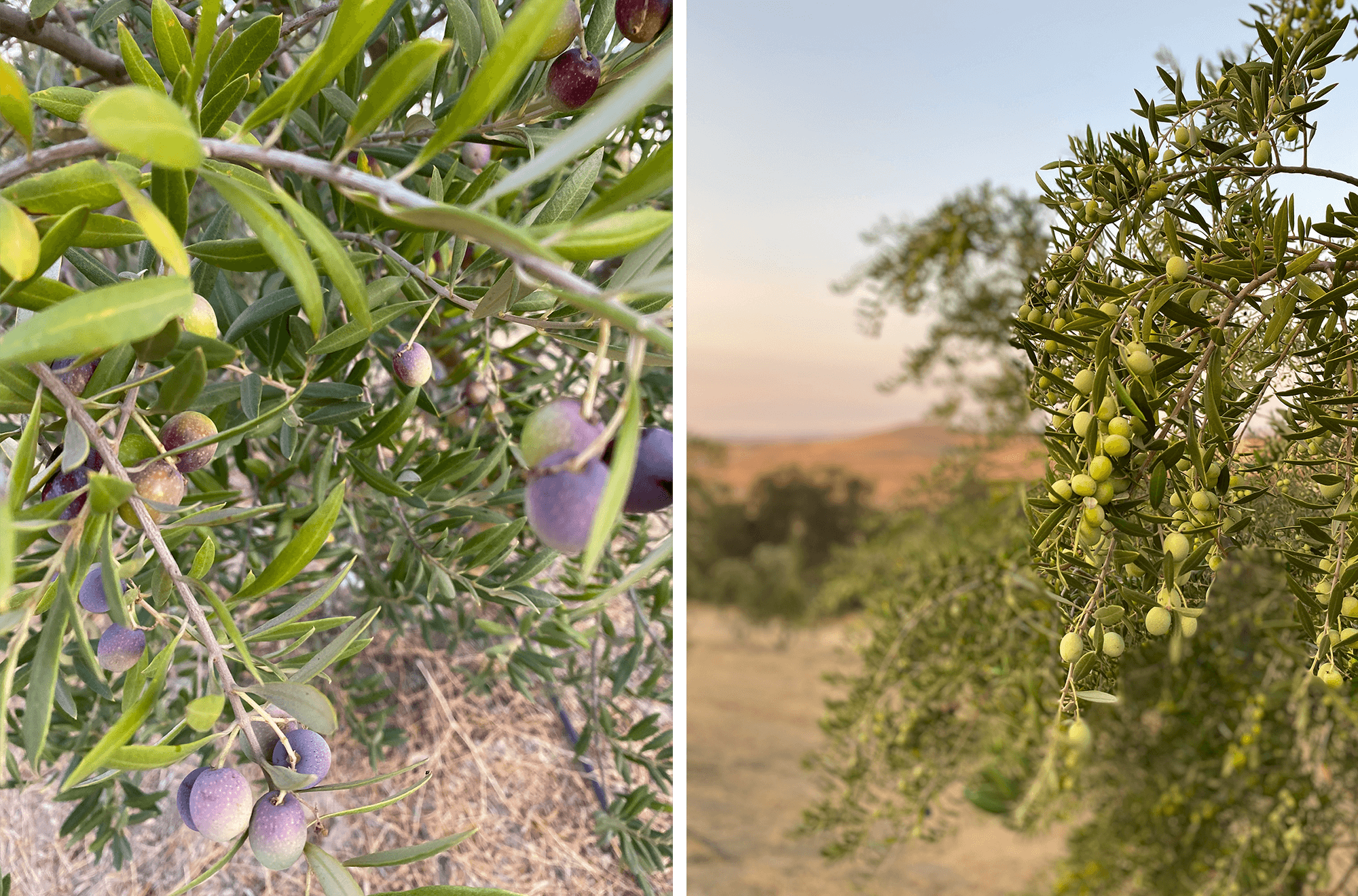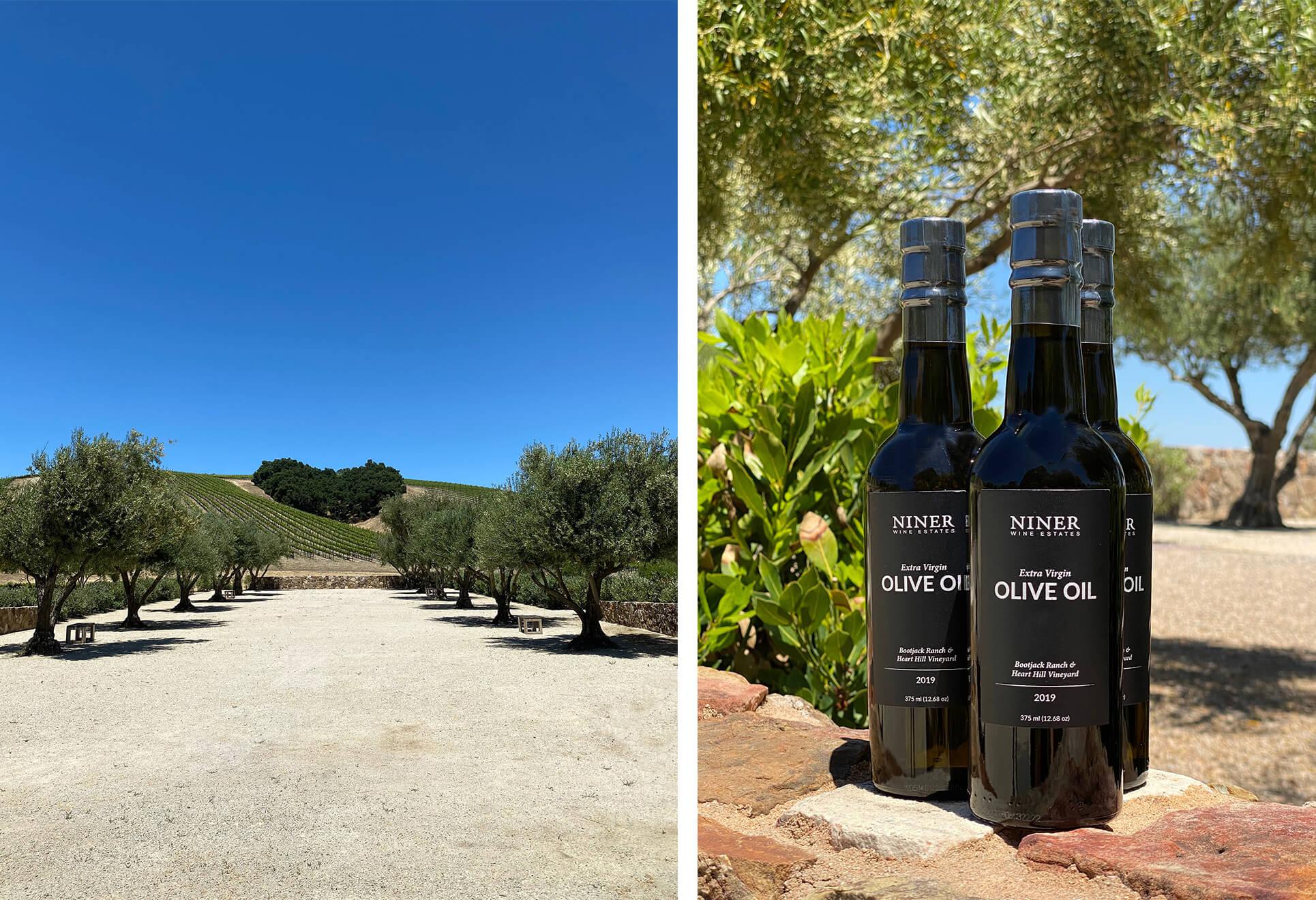We farm 350 olive trees at Bootjack Ranch and Heart Hill Vineyard. Each year, we harvest our own olives and work with Kiler Ridge Olive Farm to make a small amount of Extra Virgin Olive Oil to use in our restaurant and sell in our tasting room.
Similar to wine, olives are grown in a wide range of different varieties. We grow three different varieties between Bootjack Ranch and Heart Hill Vineyard, each of which imparts its own unique flavors to an olive oil blend.
OUR VARIETIES:
· Arbequina – An aromatic Spanish variety with fruity and sweet characteristics. Mild in flavor.
· Frantoio – An Italian variety known for its herbaceous characteristics and nutty flavor.
· Coratina – An Italian variety that is fruity, green and slightly bitter.
All three varieties are blended together and the finished product is a fruity, buttery and slightly spicy olive oil perfect for cooking, dressings and marinades, or even dipping your favorite bread and garden veggies. To learn more about the process to make our olive oil, keep reading!
THE PROCESS
To be labeled as “Extra Virgin”, olive oil must be in its purest form, made without any chemicals and with very little to no heat. Green or ripe olive flavors must be present and there can be no flavor defects. Our goal is to produce a delicious extra virgin olive oil each year to share with our customers.
Around the time our team harvests the last vineyard blocks, we start gearing up for the olive harvest. The olive harvest normally happens in late October to early November.
Each olive tree is harvested by hand. We lay a tarp out beneath the tree and run an olive rake through the branches. The olive rake is designed to knock as many olives out of the tree and onto the tarp as possible without damaging them. The olives are then collected into ½ ton bins and transported immediately to the Kiler Ridge mill.
Olives oxidize easily if they are damaged or not processed quickly. This is detrimental to the flavor and causes the oil to lose antioxidants, the main health benefit of olive oil. Getting the olives to the mill right away preserves the olives and produces a healthier, better-quality product.
Once the olives are at the mill, there are four main steps to the process: washing, crushing, mixing and extracting.
Washing – Similar to when grapes are brought into the winery, the olives are sorted and separated from leaves, twigs, stems and other debris that comes in with the harvest. They are then washed to remove dirt.
Crushing – This step involves crushing the olives into a paste. While the olives are crushed, the fruit cells tear which facilitates the release of tiny olive oil droplets.
Mixing (or malaxing) – The olive paste is mixed for 20 – 45 minutes while gently heated. This process brings all of the tiny olive oil droplets together combining them into bigger drops.
Extracting –The oil is separated from the rest of the olive components by two-phase centrifugation. The oil that comes out of the first centrifuge is processed further in a second, faster-rotating centrifuge to eliminate any remaining water and solids. This oil is transferred into stainless steel drums where it rests for the next 3 – 4 months while gravity separates any remaining solids from the oil. Similar to wine, the “lees” or solids are racked off the clear oil and it is finally ready to bottle.
For recipe ideas featuring our olive oil, take a look at some of our Chef’s favorite recipes here. Happy cooking!




